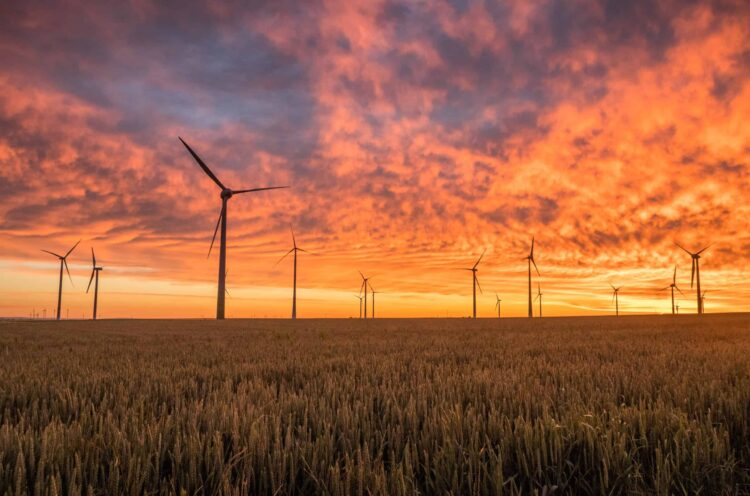Technology, Regulatory Process & Western Canada’s Energy Transition

Authors: Ken Tennenhouse, Katie Bellett
The energy transition to a low carbon future is well underway. Organizations across the globe are aggressively pursuing a multitude of opportunities and technology will play a crucial role in moving energy systems forward to address climate risk. The ability of governments, regulators, stakeholders and energy project proponents to assess, utilize and capitalize on technological advancement will determine how, and at what pace, the energy transition will unfold.
In support of the energy transition in Canada, the prairie provinces will lead the nation’s growth in renewable energy capacity over the next three years and beyond. The Canadian Energy Regulator’s recent report, “Canada’s Renewable Power,” predicts that decreased reliance on coal and substantial increases in wind and solar capacity will increase the amount of renewable energy added to the grid, specifically in Alberta and Saskatchewan. Conventional energy sources in Western Canada such as oil and gas will also continue to play a prominent part in the energy transition for the foreseeable future.
Plan Ahead for Technological Advances and Regulatory Delays
Western Canada’s successful participation in the energy transition depends on how well companies can develop and implement new technology. Success also depends on how well governments and regulators can accommodate technological innovation in their policies, processes and systems; this is especially true in relation to project permitting. In the wind and solar industries, as examples, technology is advancing at such a rapid pace that a likely scenario may emerge where project proponents have a want or need to upgrade technology at some point after a project enters the regulatory permitting process. The same is true in relation to transition projects in the conventional space, where technology is advancing rapidly in support of emissions reduction opportunities, requiring new approvals or amendments to existing approvals.
Looking south of the border to the emerging US offshore wind industry, the 800 MW Vineyard Wind project (recently approved by the Bureau of Ocean Energy Management) is an example of this very issue, where the final issuance of the project permit was delayed several months as a result of the proponent withdrawing its application in order to upgrade its wind turbines to newer technology midway through the regulatory process. This delay in the permitting process will in turn delay the start of commercial operations for the project by more than a year. In such instances, and in order to avoid these sorts of issues, it will be imperative for proponents and regulators in Western Canada to recognize the importance of implementing the newest and best technology and remain adaptable and flexible in order to support the energy transition. It is also important to ensure the regulator’s oversight function remains robust so projects are developed in a safe, timely and economic manner.
Across Western Canada, several regulators have already turned their minds to the importance of effective and timely accommodation of technology.
Manitoba
In 2018, the Government of Manitoba submitted its Made-in-Manitoba Climate and Green Plan to the Federal Government, which included proposals for carbon pricing and reductions in carbon emissions. The Province also created an agency, Efficiency Manitoba, with a legislative mandate to develop and support energy efficiency initiatives to reduce provincial consumption of natural gas by 0.75% annually. The provincial power regulator, the Public Utilities Board, does not specifically mention carbon transition in its Strategic Plan published March, 2021.
Bill 35 (The Public Utilities Ratepayer Protection and Regulatory Reform Act) received First Reading in the Manitoba Legislature in 2020. Bill 35 contemplated that the Chair of the Public Utilities Board would enter into a memorandum of understanding with the Minister covering, among other things, “details respecting the board’s obligation to establish performance standards”. Another provision would have required the electrical utility, Manitoba Hydro, to publish an Integrated Resource Plan that included supply-side options over a 10 year planning horizon. Other, unrelated provisions of Bill 35 attracted public attention and the Bill has since been withdrawn. There continues to be interest in evolving technologies but, for the moment, there are uncertainties in the regulatory framework and most initiatives continue to entail bilateral arrangements with the utility.
Saskatchewan
In “Saskatchewan’s Growth Plan: The Next Decade of Growth 2020-2030,” the Government of Saskatchewan has included the goal of “reducing carbon emissions in electricity production and advancing the development of zero-emission small modular reactor technology using Saskatchewan uranium.” The Government of Saskatchewan believes that small modular reactors, or SMRs, could play a critical role in reducing greenhouse gas emissions from electrical generation in Saskatchewan. Depending on the type selected for deployment, the Government of Saskatchewan believes that small modular reactors could also help boost uranium production in Saskatchewan, enhance nuclear research in the province and add jobs in construction and facilities operations. To move these ambitious goals related to SMR technology forward, in December 2019, the Government of Saskatchewan signed a Memorandum of Understanding (MOU) with Ontario and New Brunswick and later in April 2021, Alberta, to work towards the evaluation and implementation of SMRs. Milestones for the MOU include: a Ministers’ meeting to discuss approaches (completed in February 2020), a feasibility report (completed in March 2021), and a strategic plan (anticipated for winter 2021).
Alberta
In Alberta, the Alberta Utilities Commission’s (AUC) current Strategic Plan (2021-2024) outlines an aspiration to become the North American benchmark for regulatory timeliness, and describes its commitment to working with other agencies and government to facilitate decarbonization and technology development. At a more tactical level, to achieve this commitment, the recently updated AUC Rule 007 sets out new criteria for wind and solar development and provides additional clarity and direction in relation to coordination with other government agencies. In relation to wind, solar and thermal facilities, and presumably to accommodate technological innovation, Rule 007 provides specific guidance regarding applications where changes in equipment or layout are anticipated after the approval of the application.[4] On the conventional side, the AER’s current Strategic Plan (2018-2023) also specifically calls out the need for the regulatory system to enable the energy transition, with the regulator contributing to policy development surrounding the regulation of hydrocarbons and renewable energy sources.
British Columbia
In British Columbia, 98% of the power generated by BC Hydro (the province’s main electricity distributor) comes from clean or renewable resources – mostly from hydroelectric sources powered by water – making BC’s power generation one of the cleanest in Western North America. Yet, despite having access to clean energy, 70% of the energy used by those living in BC comes from fossil fuels.
In order to address this discrepancy and transition British Columbians to renewable energy sources, on September 28, 2021, the Province of British Columbia and BC Hydro announced “BC Hydro’s Electrification Plan: A clean future powered by water” (the “Electrification Plan”). Electrification is the process of replacing energy and technologies that are powered by fossil fuels, such as natural gas, petroleum and diesel, with alternatives that use electricity. The goal of the Electrification Plan, which is to be implemented over five years, is to support and pursue electrification opportunities in three areas: buildings, transportation and industry. Due to the size of BC’s industrial sector, it represents the largest opportunity for electrification.
BC Hydro plans to invest $60 million in incentives for industrial fuel switching (connecting to BC Hydro’s grid rather than relying on fossil fuels) and over $45 million in investments to attract new industrial customers to BC, including funding to help customers connect to the existing electrical infrastructure, and to provide incentives for new industry and innovation in hydrogen production, carbon capture and synthetic fuel production. These incentives will build upon those already offered through CleanBC, which supports industry initiatives to reduce emissions and increase clean technological innovation.
Moving Western Canada’s Energy Transition Forward
It is encouraging that regulators in Western Canada have been explicit in their support of innovation and technology advancement. However, the real test is will be how well that support translates into practice and specifically whether regulatory processes are able to effectively incorporate rapid technology advancement without creating undue delay in approval timelines.
Equally important in ensuring that technology is properly developed and used in support of the energy transition, companies must carefully consider the manner in which they engage with governments, regulators and stakeholders and in particular when decisions regarding technology and innovation are involved. Early and often communication is critical, as is building trust through transparent dialogue and disclosure.
With an experienced team of energy lawyers in offices across Western Canada, MLT Aikins is well-positioned to assist clients as they navigate through the energy transition and the associated regulatory frameworks.
Energy Transition Checklist
We’ve developed an energy transition checklist for organizations to assess their current energy strategy to address climate change. Complete the checklist to determine your organization’s energy transition progress.
Note: This article is of a general nature only and is not exhaustive of all possible legal rights or remedies. In addition, laws may change over time and should be interpreted only in the context of particular circumstances such that these materials are not intended to be relied upon or taken as legal advice or opinion. Readers should consult a legal professional for specific advice in any particular situation.


